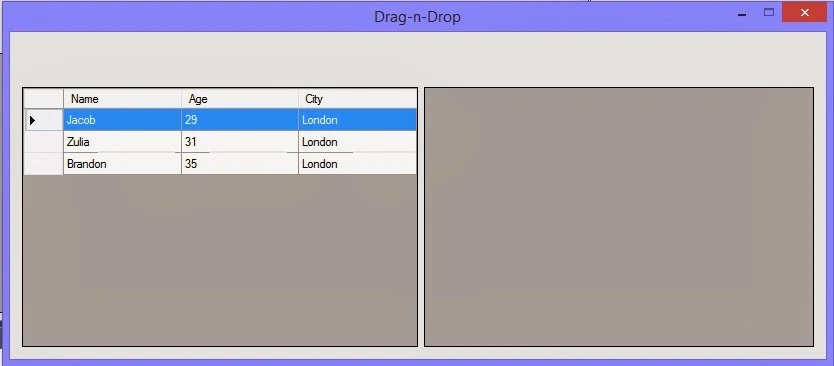+Pinal Dave : As a database developer, you need to regularly retrieve data for various purposes, such as creating reports and manipulating data. You can retrieve data from the database server by using SQL queries.
In this article we will let you know how to retrieve selected data from database tables by executing the SQL queries. It will also explain to use functions to customize the result set as well as summarize and grouping data.
You need to specify the data type according to the data to be stored. For example, you can specify character as the data type to store the employee name, date time as the data type to store the hire date of employees. SQL Server 2005 supports the following data types.
Int: ranges from (-) 2^31 to 2^31-1 and used to store Integer data (whole numbers)
Decimal: ranges from (-)10^38 +1 through 10^38-1 and used to store Numeric data types with a fixed precision and scale
Numeric: ranges from (-)10^38+1 through 10^38-1 and used to store Numeric data types with a fixed precision and scale
Float: ranges from (-)1.79E+308to-2.23E-308,0 and 2.23E-308 to 1.79E+308 and used to store Floating precision data
Money: ranges from (-)922,203,685,477.5808 to 922,337,203,685,477.5807 and used to store monetary data
Datetime: ranges from January 1,1753, through December 31, 9999 and used to store Date and time data
Char(n): n characters, where n can be 1 to 8000 and used to store Fixed length character data
Varchar(n): n characters, where n can be 1 to 8000 and used to store Variable length character data
Text: Maximum length of 2^31-1(2,147,483,647) characters and used to store character string
Bit: 0 or 1 and used to store Integer data with 0 or 1
Image: maximum length of 2^31-1(2,147,483,647) bytes and used to store Variable length binary data to store images
Sql_variant: Maximum length of 8016 bytes Different data types except text, ntext, image, timestamp, and
sql_variant
Timestamp: maximum storage size of 8 bytes Unique number in a database that is updated every time a row that contains timestamp is inserted or updated
Uniqueidentifier: Is a 16-byte GUID A column or local variable of the uniqueidentifier data type can be initialized by either using the NEWID function or converting from a string constant in the form xxxxxxxx-xxxx-xxxx-xxxx-xxxxxxxxxxxx, where each x is a hexadecimal digit in the range 0-9 or a-f. For example, an unique identifier value is 6F9619FF-8B86-D011-B42D-00C04FC964FF
Table: Result set to be processed later
Xml: xml instances and xml type variables Store and return xml values
In the next article, we will discuss about how to fire a query to retrieve data from the database in sql server management studio.
In this article we will let you know how to retrieve selected data from database tables by executing the SQL queries. It will also explain to use functions to customize the result set as well as summarize and grouping data.
Retrieving Data
At times, the database developers might need to retrieve complete or selected data from a table. Depending on the requirements, you might need to extract only selected columns or rows from a table. Consider the example of an organization that stores the employee data in SQL Server database. At times, the users might need to extract only selected information such as name, data of birth and address details of all the employees. At other times, the users might need to retrieve all the details of the employees in the Sales and Marketing department.Identifying Data types
Data type specifies the type of data that an object can contain, such as character data or integer data. You can associate a data type with each column, local variable, expression, or parameter defined in the database.You need to specify the data type according to the data to be stored. For example, you can specify character as the data type to store the employee name, date time as the data type to store the hire date of employees. SQL Server 2005 supports the following data types.
Int: ranges from (-) 2^31 to 2^31-1 and used to store Integer data (whole numbers)
Decimal: ranges from (-)10^38 +1 through 10^38-1 and used to store Numeric data types with a fixed precision and scale
Numeric: ranges from (-)10^38+1 through 10^38-1 and used to store Numeric data types with a fixed precision and scale
Float: ranges from (-)1.79E+308to-2.23E-308,0 and 2.23E-308 to 1.79E+308 and used to store Floating precision data
Money: ranges from (-)922,203,685,477.5808 to 922,337,203,685,477.5807 and used to store monetary data
Datetime: ranges from January 1,1753, through December 31, 9999 and used to store Date and time data
Char(n): n characters, where n can be 1 to 8000 and used to store Fixed length character data
Varchar(n): n characters, where n can be 1 to 8000 and used to store Variable length character data
Text: Maximum length of 2^31-1(2,147,483,647) characters and used to store character string
Bit: 0 or 1 and used to store Integer data with 0 or 1
Image: maximum length of 2^31-1(2,147,483,647) bytes and used to store Variable length binary data to store images
Sql_variant: Maximum length of 8016 bytes Different data types except text, ntext, image, timestamp, and
sql_variant
Timestamp: maximum storage size of 8 bytes Unique number in a database that is updated every time a row that contains timestamp is inserted or updated
Uniqueidentifier: Is a 16-byte GUID A column or local variable of the uniqueidentifier data type can be initialized by either using the NEWID function or converting from a string constant in the form xxxxxxxx-xxxx-xxxx-xxxx-xxxxxxxxxxxx, where each x is a hexadecimal digit in the range 0-9 or a-f. For example, an unique identifier value is 6F9619FF-8B86-D011-B42D-00C04FC964FF
Table: Result set to be processed later
Xml: xml instances and xml type variables Store and return xml values
In the next article, we will discuss about how to fire a query to retrieve data from the database in sql server management studio.










